Innovative Ways of Using Packaging to Boost Your Brand and Sustainability
By Morten Numrich · 18. April 2024
Discover different ways of using packaging to not only safeguard🛡️ your products but also to significantly enhance your brand’s presence and sustainability efforts.
From edible delights that encapsulate your goods to plantable seeds that carry your brand’s legacy, this article unveils a myriad of inventive applications.
Get ready to transform your packaging approach into an impactful brand experience that speaks to an eco-conscious audience and stands out in the competitive market.
Functional and Attractive Food Packaging
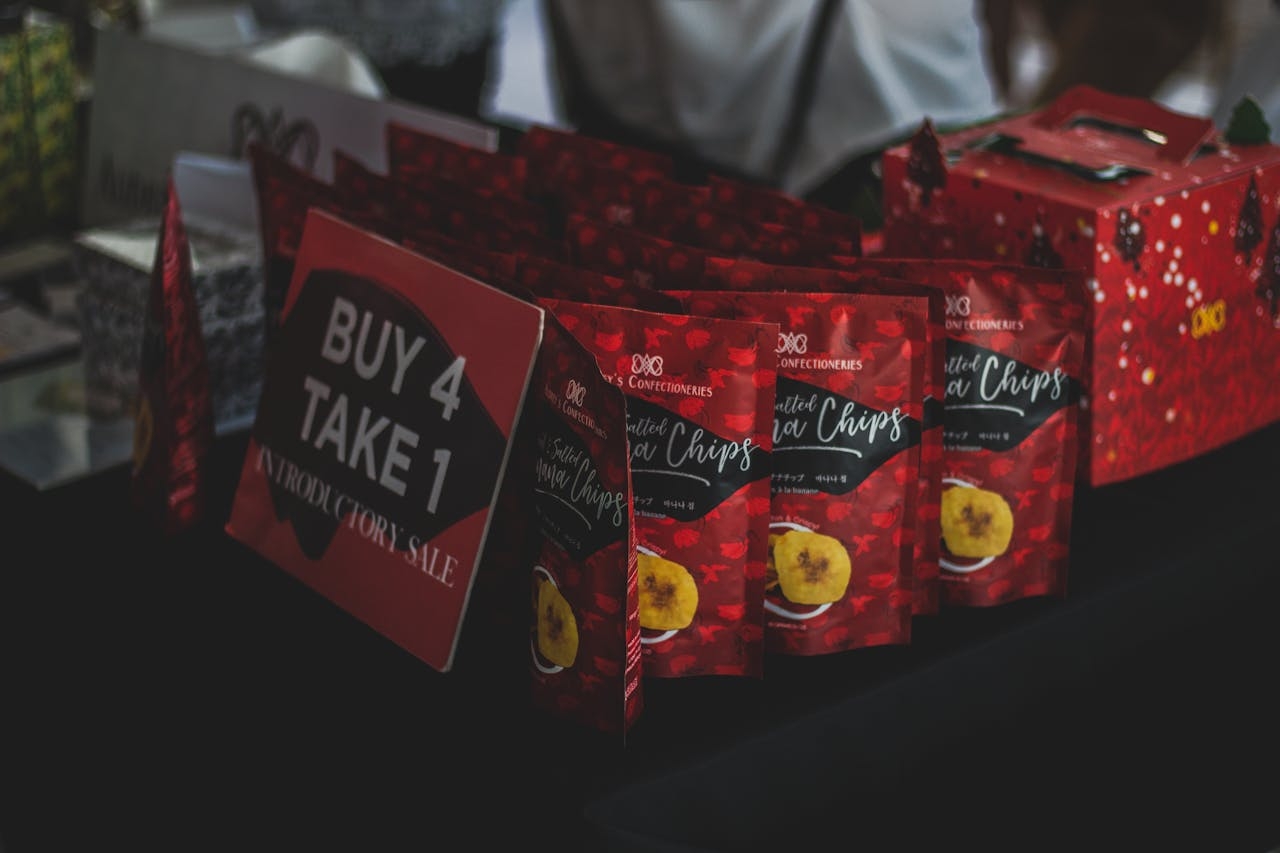 branded food packaging
branded food packaging
Imagine a world where the edible packaging is as delectable as the food items it holds — a harmonious blend of practicality and pizzas.
In the bustling aisles of the marketplace, how your food packaging is dressed can mean the difference between blending in and standing out.
It’s not just about keeping the goodies fresh; it’s about telling a tantalizing tale that tempts the taste buds and captures the conscience of the eco-aware shopper.
With innovative packaging ideas, the future of food packaging is not only functional but also environmentally friendly🌍🌱 and visually appealing.
Biodegradable containers
Biodegradable containers are like the superheroes of the food packaging world — they swoop in, do their job, and vanish without a trace (or at least within 90 to 180 days).
Not only do they fight the villainy of overstuffed landfills, but they’re also made from recycled waste, slashing resource use and carbon footprints with the finesse of a seasoned eco-warrior.
Add to that a brand image so green it could make leaves blush, and you’ve got a loyalty magnet for the modern, planet-loving patron.
But these containers aren’t just about saving the world; they’re about safety too. Crafted from natural materials free from nasties like Bisphenol-A, they’re a safe haven for foodstuffs of all ages.
And if that wasn’t enough, these environmental knights come cheaper than their plastic counterparts, ducking the costly blows of recycling♻️ processes.
Reusable jars
Reusable jars are the trusty steeds of the food packaging kingdom, gallantly reducing plastic waste and raw material usage with every reuse.
They’re not just a sustainable choice; they’re a canvas for creativity, offering brands a chance to let customers dabble in the art of packaging interaction.
Yet, with great reusability comes great responsibility — these jars come with their own set of challenges, from the higher initial environmental costs of production to the logistical labyrinth of transport and washing.
And cleanliness is next to godliness, as they say. Ensuring food safety standards through proper hygiene practices is paramount, whether it’s through centralized sanitization hubs or the whir of a dishwasher.
But conquer these hurdles, and reusable jars transform from humble containers to bastions of environmental and branding brilliance.
Creative Retail Packaging Solutions
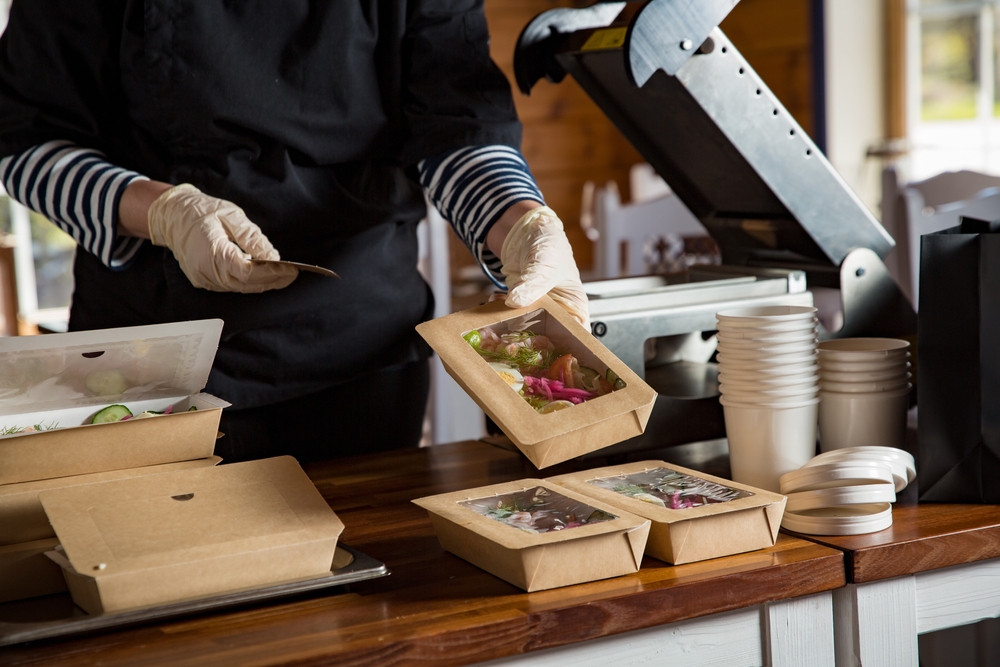 restaurant worker packaging food in takeaway boxes
restaurant worker packaging food in takeaway boxes
Step off the food aisle and into the wider world of retail, where the packaging is not just a vessel but an experience, a statement, a whisper of luxury wrapped around your product.
This is where the magic happens, where small businesses and luxury brands alike can spellbind customers with packaging that’s as creative as it is memorable.
It’s about crafting a story that clings to the mind long after the product is enjoyed. In the packaging industry, it’s all about making an impact that lasts.
Custom-designed boxes
Custom-designed boxes, including corrugated boxes, are the chameleons of the packaging ecosystem, changing their skin with die-cut windows and unique shapes to become something truly eye-catching.
They’re not just boxes; they’re treasure chests for subscription services, cradling their contents in bespoke luxury that keeps customers coming back for the thrill of discovery.
And with materials like translucent plastics and metal accents, these boxes don’t just package products; they elevate them to the realm of the extraordinary.
It’s not just about looks, though. These boxes can be cushioned with paper designed to protect and to please, sporting custom prints that echo a brand’s soul.
And let’s not forget the finishing touches, the ribbons that adorn these boxes, often inducing a sensory delight that hints at the opulence within.
Interactive packaging
Interactive packaging is the enchantress of the retail world, casting spells with augmented reality that whisk customers away to virtual realms, all with a tap on their smartphones.
Color-changing elements add a touch of alchemy, transforming the package with a caress or a temperature shift, making the product not just seen but felt.
And who said packaging can’t be playful? Puzzles and games woven into the design invite customers to engage, turning a simple unboxing into an event that tickles the mind and the imagination.
This blend of technology and creativity doesn’t just entertain; it connects. It transforms the act of opening a package into a journey, a conversation with the brand that lingers long after the product is revealed.
Sustainable Materials for Product Protection
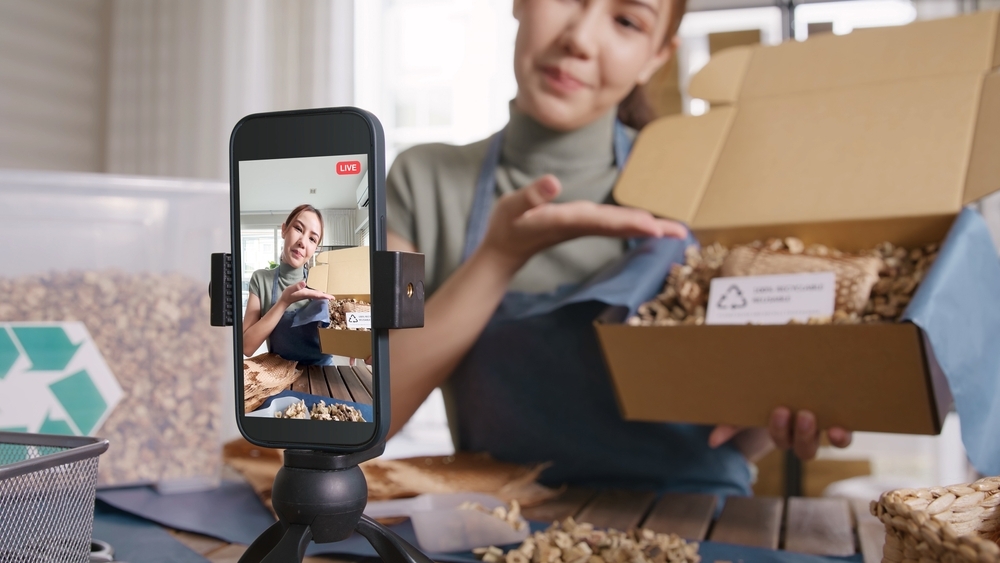 Reusable Packaging use in a store
Reusable Packaging use in a store
Now, let’s turn our gaze to the guardians of our goods during their journey to us — the raw materials that cradle, cushion, and care for our products, all the while treading lightly on the earth.
This is where sustainability gets down to business, where the rubber meets the road, and where innovative materials stand as testament to the balance between protection and the planet.
Paper-based cushioning
Paper-based cushioning, including wrapping paper, is the unsung hero of sustainable packing, offering a recyclable embrace that’s as kind to your products as it is to the environment.
It’s a game-changer, a challenger to plastic packaging and plastic wrap that absorbs impacts with ease and with less cost to our wallets and our world.
Enter paper bubble wrap, the lightweight champion made from 100% recycled paper, ready to protect without the plastic guilt.
This eco-friendly warrior is no one-trick pony; it’s customizable, moldable to the shape of any product, committed to its safety without ever compromising on sustainability.
It’s the packaging that gives back, lowering shipment weights and the CO2 emissions they carry with them, all while ensuring your treasures arrive intact.
Customizing Packaging with Eco-Friendly Accessories
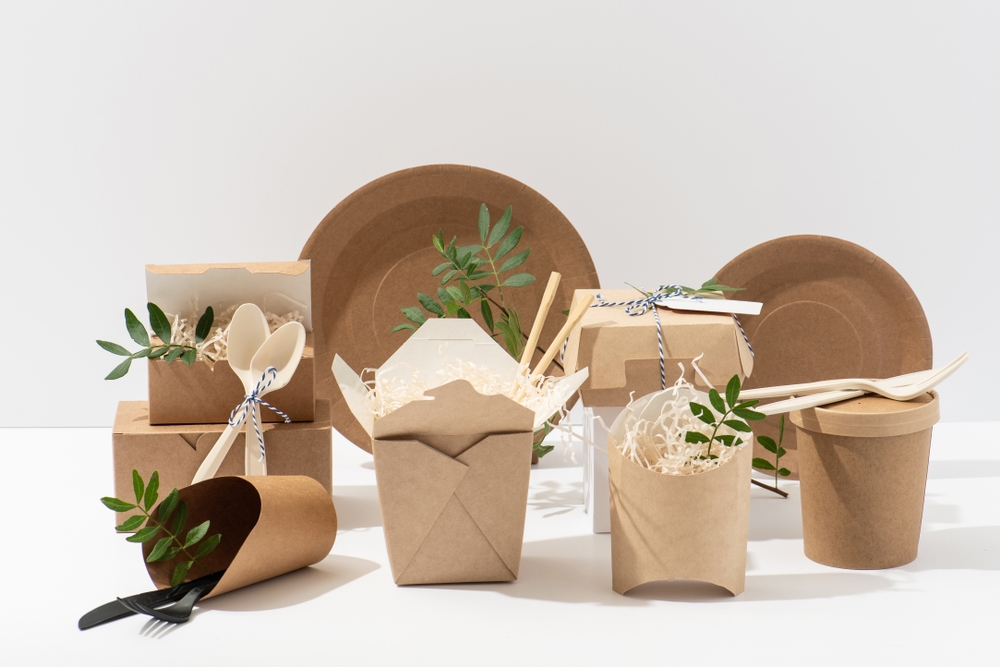 Eco-friendly Food Packaging
Eco-friendly Food Packaging
But why stop at the packaging itself?
Let’s accessorize, ethically. It’s time to sprinkle a little extra eco-friendliness on top with sustainable accessories that not only serve a purpose but tell a story — a story of a brand that cherishes the earth as much as its customers.
Recycled paper labels
Recycled paper labels are the quiet revolutionaries of packaging, whispering tales of sustainability every time they embrace a product.
They’re tough too, shrugging off water while cradling everything from boxes to CDs, all without a single tree felled in vain.
These labels are like green badges of honor, signaling a brand’s eco-credentials and resonating with the ever-growing choir of eco-conscious consumers.
And when their job is done? They bow out gracefully, joining the recycling loop, circling back into the ecosystem with a nod to the future and a commitment to enduring sustainability.
Natural fabric ribbons
Natural fabric ribbons are the cherry on top of the eco-packaging sundae, offering a touch of elegance with a clear conscience.
Made from materials like burlap, jute, and cotton, they’re the biodegradable answer to the question, “How can we make this look good and do good?”.
They come in textures that range from the rustic charm of burlap to the smooth sophistication of cotton, all while ensuring they can return to the earth from whence they came.
And the palette? As diverse as nature itself, allowing brands to tie their packages with ribbons that match their identity or the season, making each unboxing an experience that’s as delightful to the eyes as it is to the planet.
Reusable and Returnable Packaging Solutions
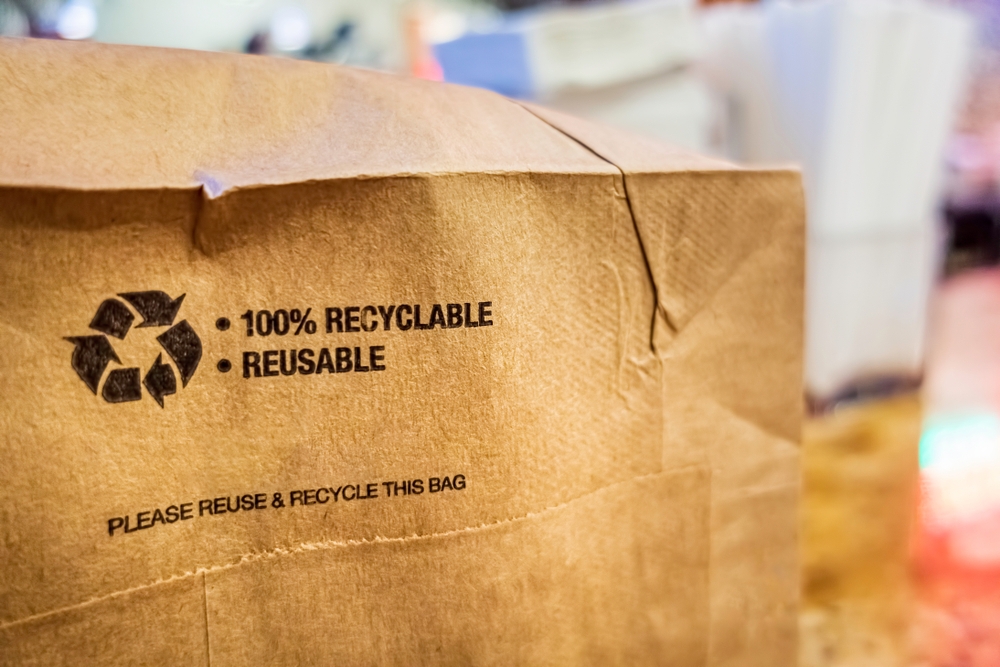 Reusable and Returnable Packaging
Reusable and Returnable Packaging
Dive into the circular economy’s heart where the mantra is ‘use, reuse, and sustain’.
Reusable♻️ and returnable packaging isn’t just a trend; it’s a transformative force reshaping how we think about product life cycles.
Here, every container, every bag, every box is designed to live multiple lives, to serve again and again, pleasing both the planet and the pocketbook.
Refillable containers
Refillable containers are like the trusty water bottles of the packaging world — always there, always ready for another round.
These containers stride across beauty counters and household shelves, reducing waste and championing sustainability with every refill.
And let’s not overlook the grocery aisles, where refill stations are popping up like mushrooms after the rain, inviting shoppers to bring their vessels and take home just what they need, sans excess packaging.
But it’s not all sunshine and savings. The refill revolution faces hurdles — from the battle for shelf space to the logistics of refill systems.
Yet, there’s a silver lining: platforms like Loop are smoothing out the creases, offering a service that includes delivery and cleaning, saving customers the hassle and keeping the cycle spinning.
And the cherry on top? The potential for customization and the cultivation of brand loyalty that comes with it.
Reusable bags
Reusable bags, including paper bags, are the knights in shining armor, rescuing the environment from the clutches of single-use plastic’s long-lasting legacy.
These bags are not just for groceries anymore; they’ve broken free, carrying their eco-friendly message into all corners of retail.
Crafted for durability and designed to endure, they lighten the load on resources with every use, embodying the essence of ‘reduce, reuse, recycle’ in every fiber.
Embrace them, and watch as the mountains of disposable bags, those energy-guzzling, fossil-fuel-sapping fiends, dwindle to mere hills. It’s a simple switch with a profound impact, a single step on the journey to a greener tomorrow.
Innovative Edible and Plantable Packaging
Now, let’s sprinkle a little whimsy into our packaging narrative with edible and plantable options that are not just outside the box — they are the box.
Here, sustainability meets creativity in a delicious and earth-friendly embrace, offering consumers a taste of innovation that’s as delightful as it is responsible.
Edible wrappers
Edible wrappers are the snack after the snack, the packaging that pleases the palate as much as it protects the planet.
They’re a no-waste wonder, turning what would be trash into a tasty treat that leaves nothing behind but satisfied smiles.
Imagine savoring a cookie cup after your coffee or indulging in a transparent, potato-based wrapper that’s as crisp as the veggies it once held.
This isn’t mere novelty; it’s a revolution in waste reduction, a bold step towards a future where packaging becomes part of the meal, disappearing bite by delicious bite.
Compostable containers
Compostable containers are the closing act in our sustainable packaging play, bowing out with as much grace as they entered.
These containers, made from plant fibers like bamboo and sugarcane, don’t just break down quickly; they team up with food scraps to enrich compost, reducing methane emissions and closing the loop on waste.
Choosing compostable containers is like wearing a badge of environmental honor, boosting a brand’s image as a true green leader.
And they’re not just for food; even mailers are getting in on the compostable action, transforming into soil-nourishing fibers that leave no trace behind, just the memory of a product well-packaged and a choice well-made.
Frequently Asked Questions
What are examples of good packaging?
Good packaging examples include the meticulous attention to detail in iPhone packaging, the iconic design of Coca-Cola, and the sleekness of KitKat packaging. Make your packaging stand out like these iconic brands!
What are the 4 types of materials that uses in packaging?
The most common packaging materials are rigid plastic, paper, paperboard, and cardboard/fiberboard. These materials cover a wide range of products and industries, ensuring your packaging needs are met.
What are the six uses of packaging?
Packaging serves six key purposes: it should be easy to use, protective, adaptable, experiential, branded, and eco-friendly. So, make sure your packaging checks all these boxes!
What makes biodegradable packaging an environmentally friendly option?
Biodegradable packaging, such as containers made from natural materials, decomposes quickly, reducing landfill impact and resource consumption compared to traditional plastics.
How does interactive packaging enhance the customer experience?
Interactive packaging enhances the customer experience by engaging them in a multi-sensory experience, using augmented reality and color-changing elements to create memorable brand interactions.

